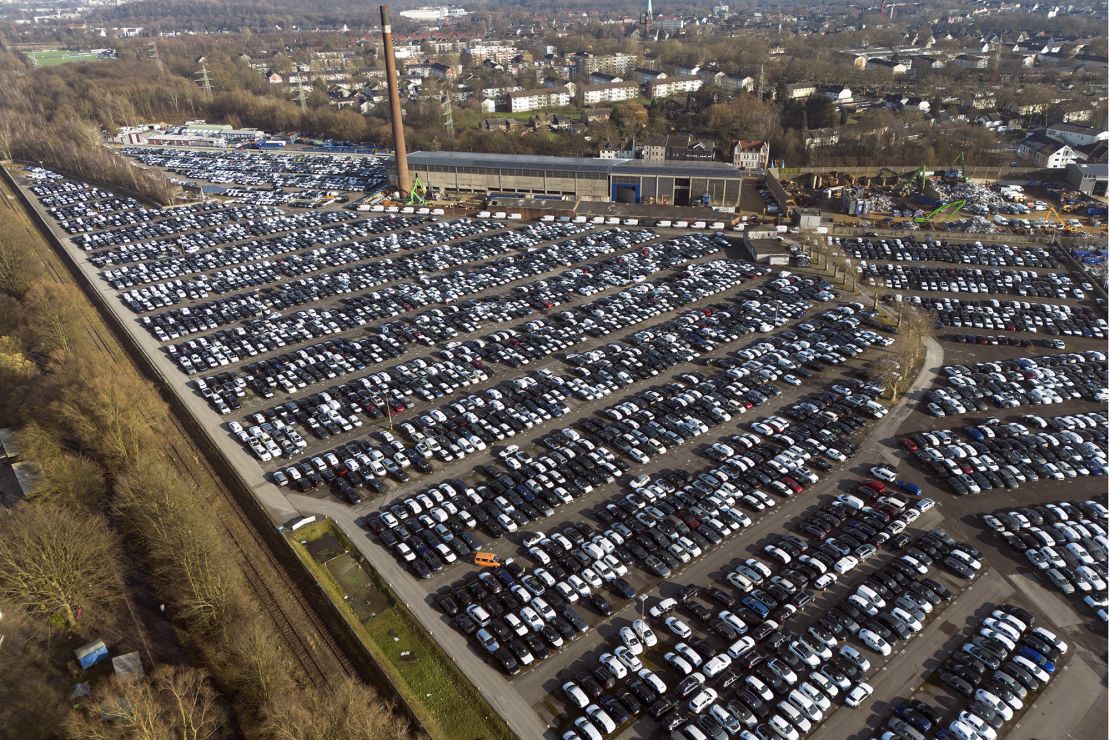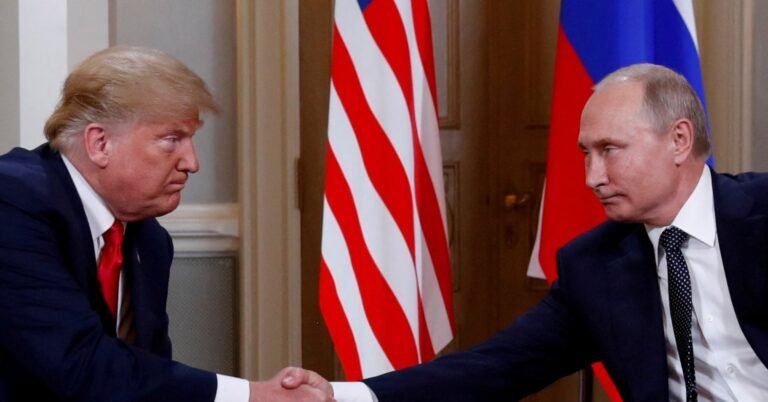Failure would be costly.
If the parties most likely to form a new governing coalition do not manage to kick-start economic growth, “my hope is that… they know who’s going to win the next elections, and this would be the far-right AfD,” said Carsten Brzeski, a senior economist at pan-European bank ING, echoing others’ fears about the Alternative for Germany party.
The German economy, the world’s third-largest, has barely grown since the pandemic. It shrank both in 2023 and last year, posting the first back-to-back annual contractions since the early 2000s. And this year, it is set to grow by a paltry 0.3%, according to International Monetary Fund forecasts.
It wasn’t always like this.
Between around 2005 and 2019, the export-oriented economy was thriving, propelled by cheap natural gas from Russia, an imports-hungry China and a relatively frictionless global trading environment.
But the world has changed dramatically since then, with Trump’s return to the White House presenting the latest challenge for Germany’s all-important exporters.
“A world in which free trade is not the… dominant economic mantra is problematic for Germany,” said Jacob Kirkegaard, a senior fellow at the Peterson Institute for International Economics, a Washington, DC-based think tank.
Economic reform to boost growth is then not only what voters want — and polls have shown the economy is one of their two top concerns — but it is also vital for the prosperity of Germany’s current and future generations, not least that of its swelling ranks of pensioners.
“An unreformed German economy is a stagnating, aging, sclerotic… German economy,” Kirkegaard told CNN.
Sputtering growth engines
Exports have long been a major driver of Germany’s growth. In 2023, the latest year for which data is available, exports of goods and services accounted for more than 43% of the country’s gross economic product — the largest share among major economies, according to the World Bank.
Motor vehicles and their parts, machinery and chemical products were Germany’s main exports last year, per its statistics office.
Relying on foreign demand was lucrative when China’s massive economy was growing rapidly and its consumers preferred to buy cars from well-established foreign automakers — such as Volkswagen — rather than home-grown upstarts.
But China’s economy has slowed in recent years, while its carmakers, such as electric vehicle manufacturers BYD and Xpeng, have snatched market share from Western rivals, both at home and abroad, as a so-called EV “revolution” has gained pace.
To some extent, the German auto industry has been “a victim of its success,” Kirkegaard said. Brands like BMW, Mercedes, and Audi, which found their fortune in the fossil fuel-burning internal combustion engine, “were quite naturally reluctant to cannibalize their success and throw a lot of money at developing electric vehicles.”
Chinese EV makers, as well as Tesla (TSLA), “have proven far better at… scaling up to producing millions of cars,” he added.
Meanwhile, Germany’s energy-guzzling industrial firms are paying more for their main fuel, natural gas, than before Moscow sent troops to Ukraine in 2022, prompting Europe to replace its gas imports from Russia with those from further afield. As a consequence, many German firms have slashed production and some have even shut down.
“We are amid deindustrialization,” said Lars Kroemer, chief economist at Gesamtmetall, an association of employers in the metal and electrical engineering industry.
That is worrying for an economy powered by “highly specialized industrial companies producing highly specialized goods,” as a German government website put it.
In addition to steep energy costs, high taxes and burdensome regulations have also clobbered the country’s industry, Kroemer said.
More broadly, strict limits on government borrowing in Germany — known as “the debt brake” — have held back much-needed investment, including in infrastructure and online public services.
“We haven’t yet digitized. Our bureaucratic burden is higher… than in other countries,” said Achim Wambach, president of the Leibniz Centre for European Economic Research, or ZEW.
Trump’s tariff blow
For months, Trump has been threatening to slap higher tariffs on goods imported into the US. Since taking office in January, he has proven he is prepared to walk the walk, announcing, for example, a 25% duty on all steel and aluminum imports, set to take effect in March.
Then, last week, Trump ordered an investigation into whether the US should introduce reciprocal tariffs on imported goods, which would mean matching the tariffs levied by other countries on American products. And on Tuesday, he said he planned to impose a 25% duty on imported automobiles, semiconductor chips and pharmaceuticals as early as April.
If foreign producers pass on most of the new tariffs to their American customers, their products could become less competitive than US-made equivalents.
That would hurt German exporters in particular as the US is their single biggest market, representing 10% of all German exports, according to official figures.
The impact would be felt most keenly by specific exporters, such as some beleaguered German automakers, Wambach said.
“Every additional push against (automakers) is bad news for the industry,” he told CNN.
Across industries, about 1.2 million jobs in Germany depend, directly or indirectly, on exports to America, according to Prognos, a Swiss research firm. That figure represents 2.6% of all jobs in the country, per the latest government data.
The extent to which the German economy overall will be affected by Trump’s new tariffs will depend partly on their eventual levels.
Germany’s central bank has looked at a scenario in which Trump introduces universal tariffs of 10% and duties of 60% on imports from China, which he talked about on the campaign trail.
It found that the German economy would “suffer considerably,” with growth taking a sizable hit, Joachim Nagel, the central bank’s president, said in a speech Monday.

Even in the absence of direct tariffs on its goods, Germany could still feel the pain from tariffs imposed on other countries.
Since taking office, Trump has also announced a 25% duty on all goods imports from Mexico and most products from Canada, and an additional 10% tariff on Chinese goods. But some German automakers, including Volkswagen, export cars to the US from their factories in Mexico.
“The whole (global) economy is like a network, so if you put a tariff or a hurdle… at one point, more or less the whole world economy will feel that,” said Michael Böhmer, chief economist at Prognos.
He added that Mexico, Canada, and China may redirect exports destined for the US to new markets to avoid Trump’s tariffs, potentially putting those products in direct competition with German goods in those markets.
Boosting Germany’s growth in the next few years and beyond will require a lot more than finding ways to deal with Trump’s tariffs. The country’s entire business model may need an overhaul, as some have argued.
Böhmer agrees. If, he said, over the next decade Germany fails to shift from “quite old” industries, such as the production of cars, machinery, and steel, to a “future-oriented economy” focused on new technologies like artificial intelligence, then it “will for sure not be third-biggest economy in the world anymore.”
Maisie Linford and Sophie Tanno contributed reporting.














